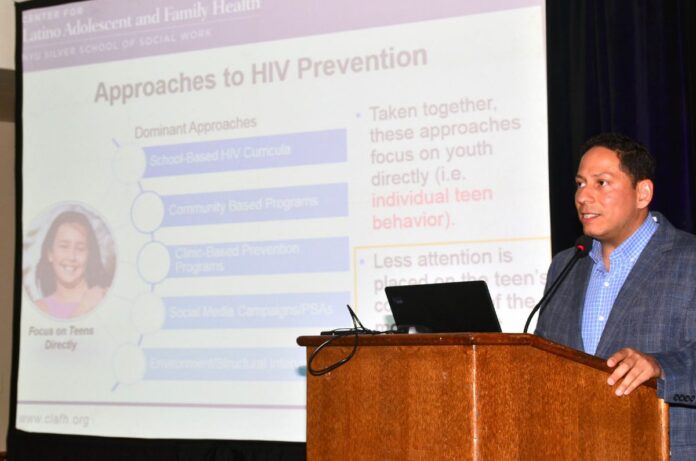SOUTH PADRE ISLAND — The AIDS epidemic.
It’s been with us more than 30 years. New treatments are allowing some patients to live a normal life span. Problem solved, right?
Wrong. Very wrong.
That’s why the Valley AIDS Council held the 2016 National Latino HIV and Hepatitis C Conference at the Pearl South Padre Island Resort June 6 – 8.
More than 300 physicians, medical, staff, social workers, community health workers and educators from 21 states and Puerto Rico attended the conference, said Oscar Lopez, director of education and prevention at the Valley AIDS Council. He was quick to point out there were even people from Alaska.
Wally Cantu, executive director of the Valley AIDS Council, said the organization had spearheaded the event to bring attention to the needs of Latinos in terms of prevention and access to care.
“It was our desire to work with our state and national partners to bring attention to the U.S./Mexican border and its unique challenges to prevention and treatment,” Cantu said.
Lopez said one of the goals of the conference was to identify the best way to prevent the spread of HIV in Latino communities. Furthermore, organizers aimed to communicate the needs of Latinos to federal partners in attendance.
Those partners included the Centers for Disease Control and Prevention. Another major partner present at the conference was Health Resources and Services Administration.
Lopez said everyone was broken up on the first day into “priority groups” such as Women, Youth, Latino men, and Gay men.
“We gave them an opportunity to define for the rest of us what the challenges are in working with the population and what the challenges are in accessing care,” Lopez said.
The groups also addressed the needs in terms of presenting populations with the right information and getting them to care facilities.
After the priority groups all met, they met with the CDC, with HERSA, and with other large HIV/AIDS organizations.
“It gave them the opportunity to speak to panelists about what was discussed in the priority groups and ask important questions like how many Latinos do you employ,” he said.
They also asked how Latinos could better be included in the national HIV/AIDS strategy which was developed by the White House in conjunction with national organizations, Lopez said.
“What we’re doing now is writing up all the notes from the priority group sessions,” Lopez said. “Those will be shared nationally with all service providers, not just the ones who were present, so that we can all move forward addressing the same issues.”
The success of the conference is significant, Lopez said, because there has never been such a large gathering of health care providers who work to combat AIDS in Latino communities.
People were drawn to the conference for many reasons, one of them to talk about how HIV and Hepatitis C has impacted the Latin population in the US.
“The nuances of working with this population is what drew in the crowd, including 20 people from Mexico,” Lopez said. “They were doctors, medical providers who also wanted to connect with people in the United States doing this work.”
The visitors from Mexico also wanted to know about migration patterns and how to empower Latina women, Lopez said.
“Their culture sometimes doesn’t allow them to take the role that they need to take to save themselves and their families,” Lopez said.
These are just a few of the many issues specific to the Latino culture that the conference addressed, Lopez said.
He seemed overjoyed at the conference’s success and the number of people and organizations which attended.
“That has never happened,” Lopez said. “We were very lucky. When we organized this conference, every single organization that works with Latinos in Washington D.C. agreed to sit at a table.”
Plans are already in motion to hold another conference next year.




